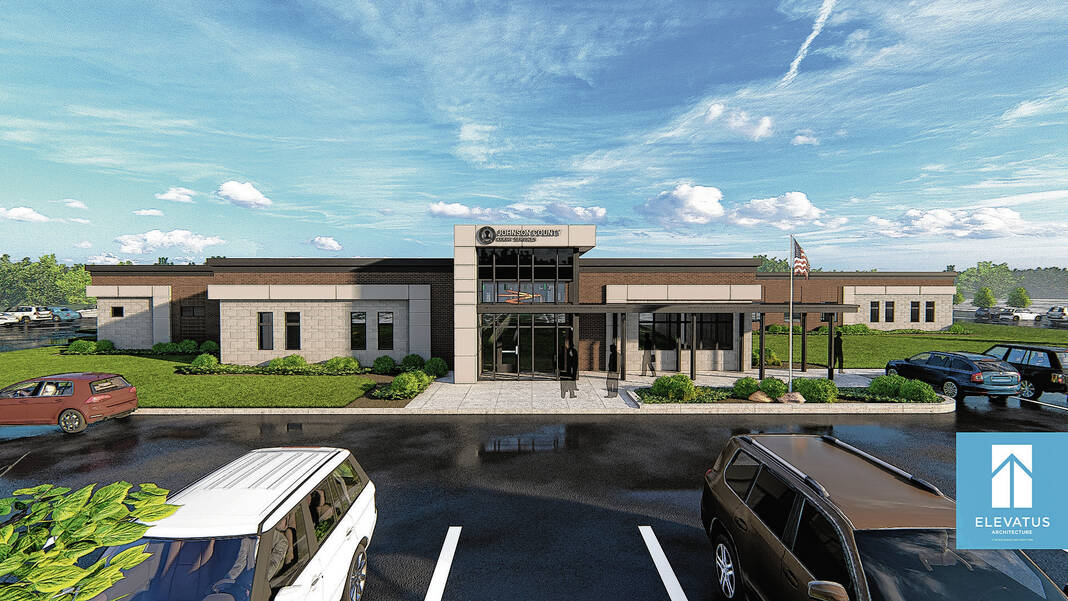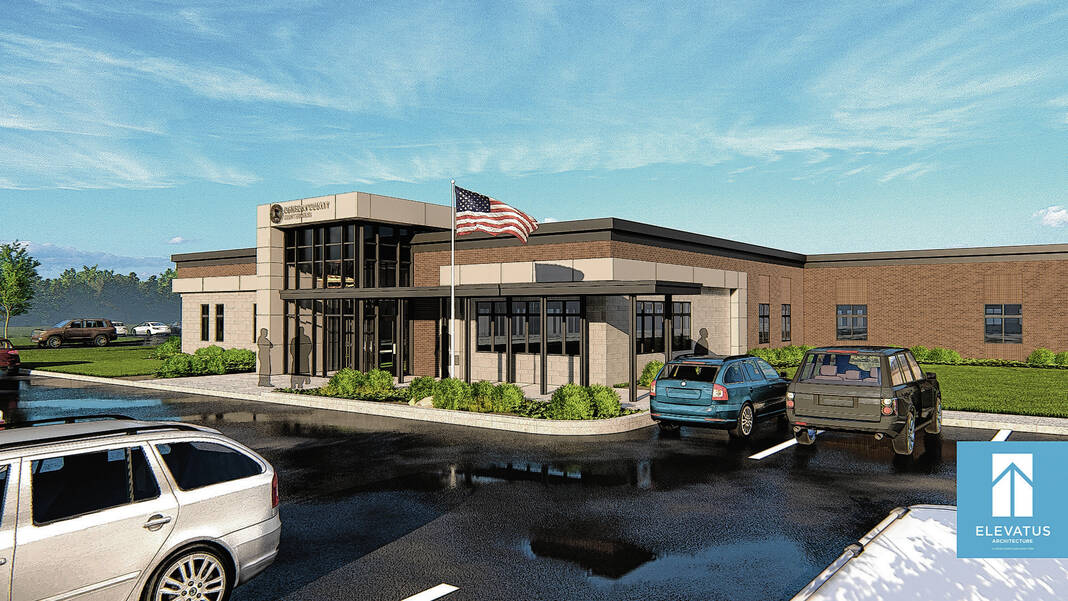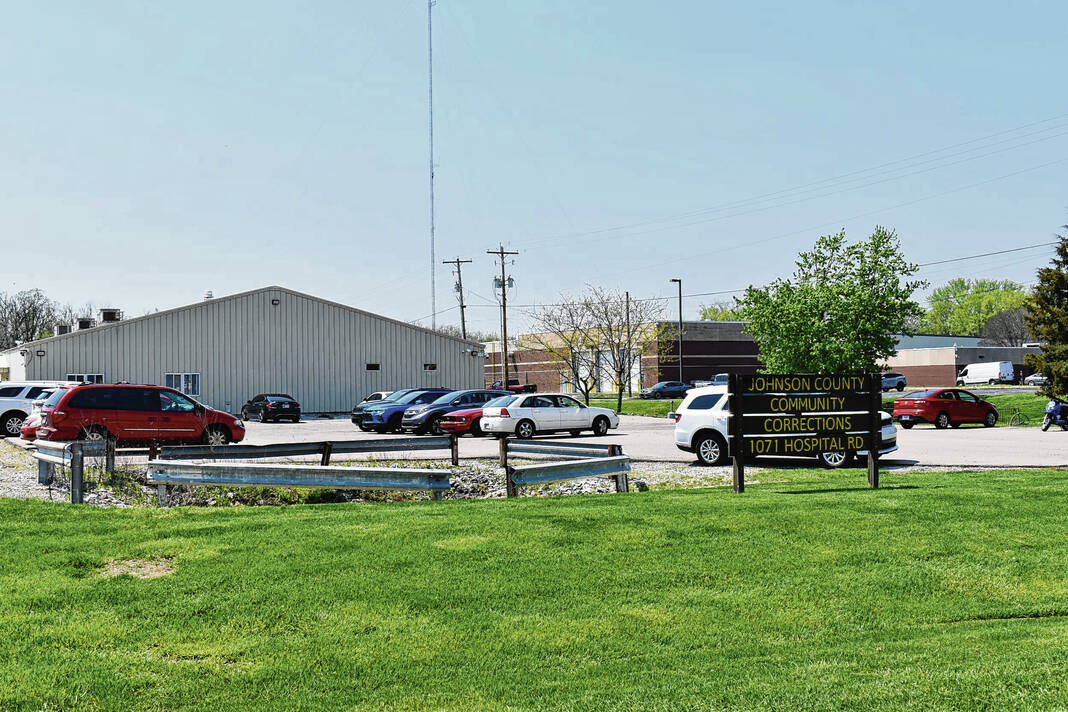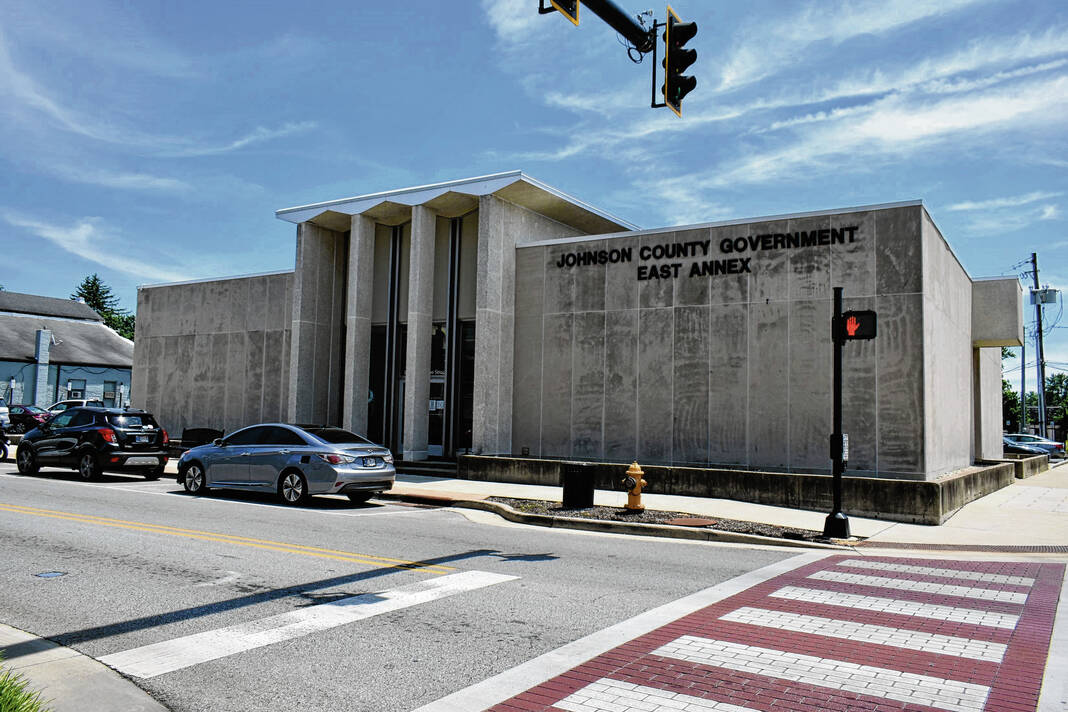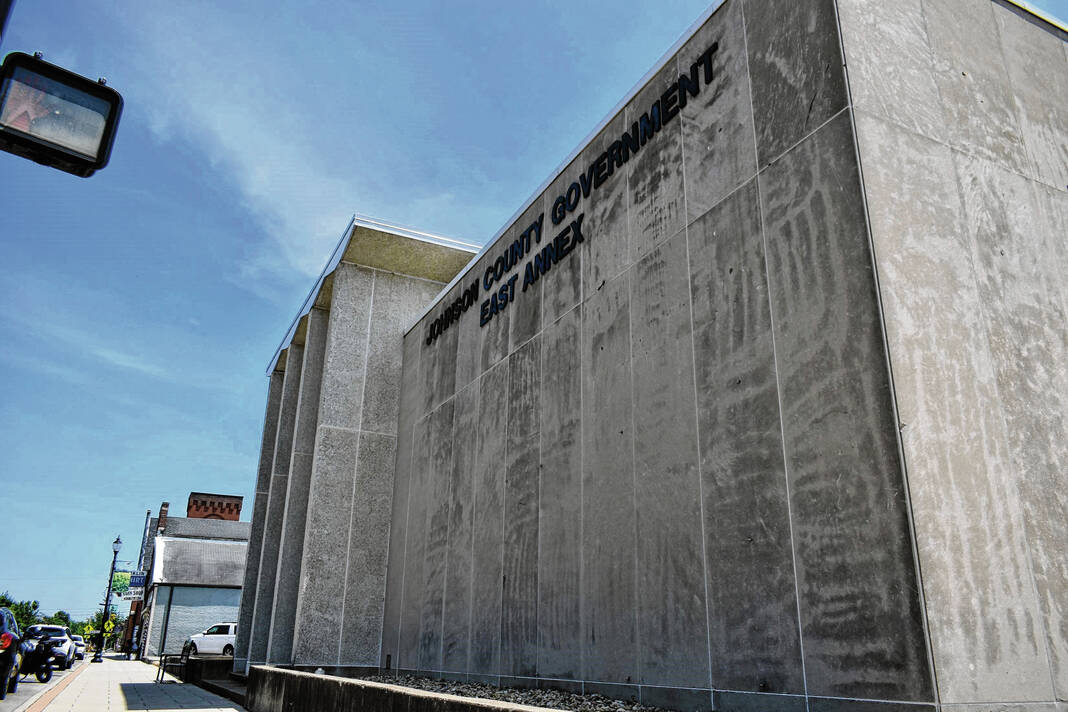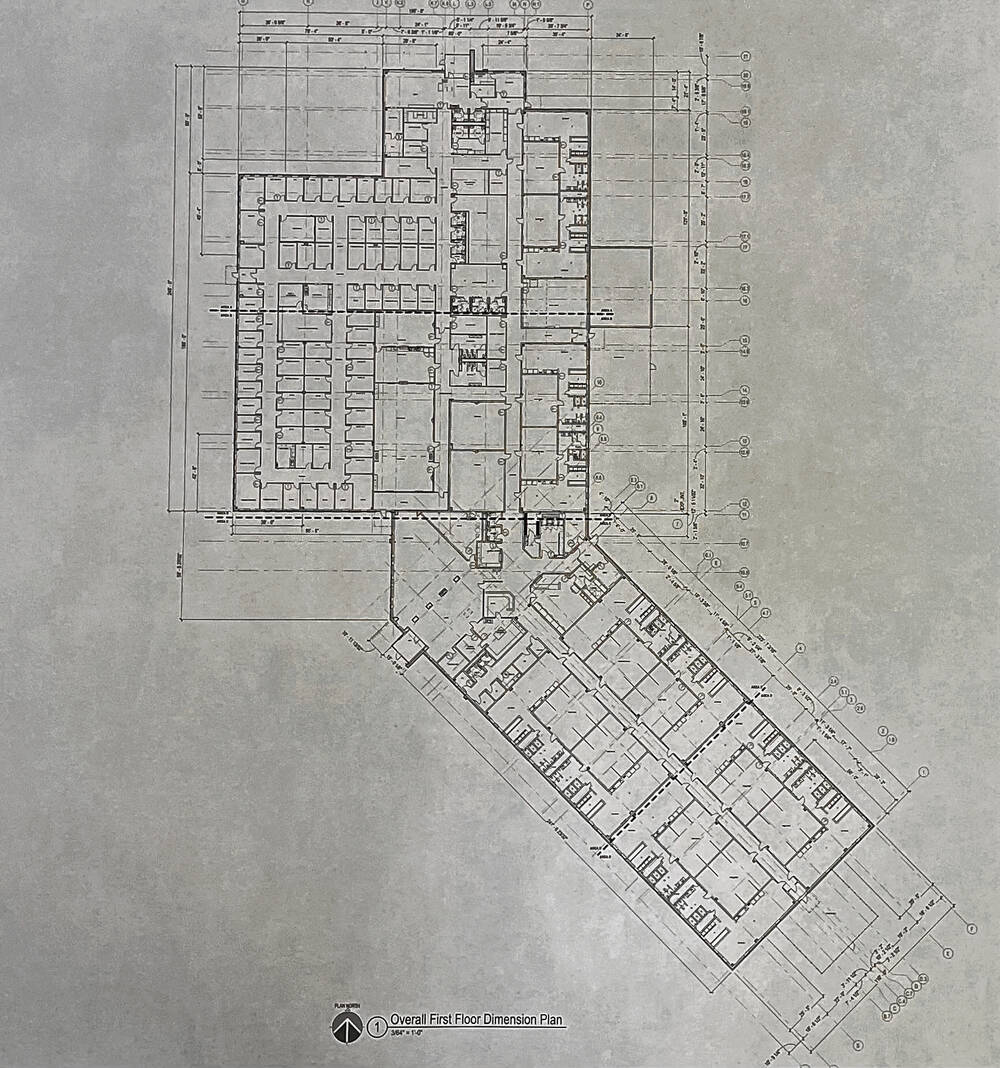For nearly 30 years, Johnson County Community Corrections has called a small, temporary building on Franklin’s southwest side home.
This could soon change as county officials prepare to build a new 73,000-square-foot building that’ll house not only adult community corrections but nearly all of Johnson County’s spread-apart court services department.
County government officials are planning to build the new Johnson County Court Services building behind the current community corrections building located at 1071 Hospital Road. The land is already county-owned, and the new building will be sandwiched between the Johnson County jail and highway department.
The timeline for construction is not yet known, as the approximately $38.4 million project has not yet been funded. The Johnson County Council will consider a bond for the project using funds from the local income tax passed in 2019 for the Johnson County jail expansion at their meeting on Monday.

If the bond is approved, which officials are hopeful for, it will set court services ahead for the future. It also would provide community corrections with credit for the “critical role” it plays in the criminal justice system, said Tony Povinelli, community corrections director.
“I think that as far as efficiency within the courts, having us in the same building as probation makes a lot of sense. We’re just going to be able to work that much more effectively,” Povinelli added.
A new building
The new 73,000-square-foot building would feature dozens of offices, bunks, classrooms and more. Offices would be for community corrections, adult probation and court services staff, said Angela Morris, court services director and chief probation officer.
Plans also include offices for program therapists, pre-trial services and problem-solving courts staff.
“Every adult community supervision service will be in this building now. Juvenile [corrections] is staying where it is,” Morris said. “The original juvenile building, it’s the same concept we’re doing now — having everything in one building to be functional and being able to move throughout without duplicating services.”
The new building would feature 12 gender-divided dormitories, four female and eight male for a total of 262 beds. Currently, community corrections has 100 beds, said Kevin Walls, county commissioner.
The divided dorms can also provide community corrections the ability to separate offenders housed there by whether they have day or night shift jobs, or based on their risk to reoffend, Povinelli said. At the current facility, they’re running out of female beds, so more beds will be great for that reason too, he said.

There are also plans for locker rooms with charging stations, which are needed for offender’s cell phones. While they’re not allowed to have phones in the bunk areas, offenders are required to have a cell phone so they can be tracked and report where they are when outside the facility. Currently, there are no charging stations in the current building, so offenders can only charge them when they leave community corrections, Morris said.
Other parts of the facility include day rooms, outdoor recreation spaces, classrooms, program spaces and a room for outside agencies to meet with offenders, plans show. The classrooms would also have a second entrance for other parts of the county government to use the space after hours. There would be security checkpoints for offenders throughout the facility so they can’t enter certain parts, such as the classrooms, without clearance, Walls said.
While there would be secure areas, it would not be as secure as a jail because of how community corrections works. Some offenders have to go to work, court-ordered programs, treatment or self-help groups and come back to their buns at the facility throughout the day, Morris said.
“It’s still community supervision. … You have probation, you have home detention, work release; those are all community supervised programs,” she said. “They’re still serving a sentence.”
Once the new building is built and community corrections, probation and court services move in, the old building will be demolished and the parking lot for the new building will be built in its place, Walls said.
Long time coming
The Court Services building is a long time coming for the county’s criminal justice system. Right now, court services are housed in two buildings: adult probation at an old bank converted to the East Government Annex on Jefferson Street in Franklin and the community corrections building, which was built as a “temporary” building in 1997.
Space is tight in the current buildings. At the east annex, there are offices and a conference room in the old bank vault and two people work in a hallway that was converted into an office at probation. At community corrections, there are four directors in one office. Morris has to travel between the two buildings multiple times a week, she said.
A lot of the efforts to improve the county’s justice system stem from a 2019 meeting between Morris, Sheriff Duane Burgess, Circuit Court Judge Andy Roesener, then-Court Administrator Brandi Foster Kirkendall and Juvenile Court Judge Michael Bohn, which Morris described as a “pledge class.” They all have the same goals and have worked together to improve the county’s justice system, Morris said. Examples of these improvements include adding problem-solving courts and unifying probation and community corrections under one department as court services.
The facility is the latest endeavor by county officials to modernize and plan for the county’s future. Over the last few years, officials have expanded the Johnson County jail, built and nearly completed a joint coroner’s office and health department building and started construction of a mental health building in partnership with Johnson Memorial Health.
“From our position, it just fits into the overall continuity that the county is providing,” Walls said.
Why it matters
Having a new building with more space for community corrections will ultimately help save taxpayers money in the long run, officials say. This is because community corrections charge offenders to stay with them.
For example, an offender on work release would pay $20 a day to be part of the program, with taxpayers paying about $4 a day. To house someone at the jail, it costs taxpayers $40 a day and the offender doesn’t pay, Povinelli said.
“Financially, it makes sense for the county to be in support of work release,” he said.
Offenders who go through community corrections also need a safe, controlled transition back to the public after being incarcerated. There are factories and businesses in Franklin, as an example, who would lose entire shifts of employees if it wasn’t for people on work release, he said.

Those on work release are also out making money, and they pay taxes on their earnings, he said.
For programming at community corrections, the goal is to help offenders develop life skills for when they are off work release and out in the community. Programs help them reintegrate into society with an established job, increased education and a better grasp on finances and relationships, Morris said.
The court services building is not a “glamorous” project but is a needed project, Walls said.
“You have to house these people. We don’t have a choice,” he said.
The county also receives funds from the Indiana Department of Corrections to house offenders who go through the department’s Community Transition Program, Morris said. They also allow state parole officers to meet with offenders at community corrections, so more space will help, she said.
The new facility will also give relief to the jail, as there will be more availability for judges to send offenders to the facility instead of a full incarceration, Walls said.
Willingness to try
Povenelli gave credit to the county commissioners and county council for their willingness to take “this leap” and try to invest in community corrections and court services now. It’s also an investment for the community, he said.
The building is being built bigger than what’s needed now because the space will likely be needed in the future, Povinelli said.
“I think that says a lot about the mentality of where the county’s at right now, not just short-sighted vision, but really long-term plans and development,” Povinelli said. “And what it means for me, it’s really neat to be a part of this project that’s going to be around for decades.”
For years, county officials have been talking expanding community corrections, but had opted instead to put band-aids in place, Walls said.
This time things are different.
“It’s something we’ve worked on for a long time,” Walls said. “We’ve tried to build a plan and I think it’s all coming together now.”
Povinelli also credits all of the stakeholders in the county’s justice system for their teamwork and collaboration in taking this step to modernize.
“Their willingness to partner with community corrections, and work with us professionally — that’s not how it was two-and-a-half years ago,” Povinelli said. “Their willingness to do that has is what’s making all this possible, and it really is what makes Johnson County, I think, one of the most efficient criminal justice systems in the state.”


